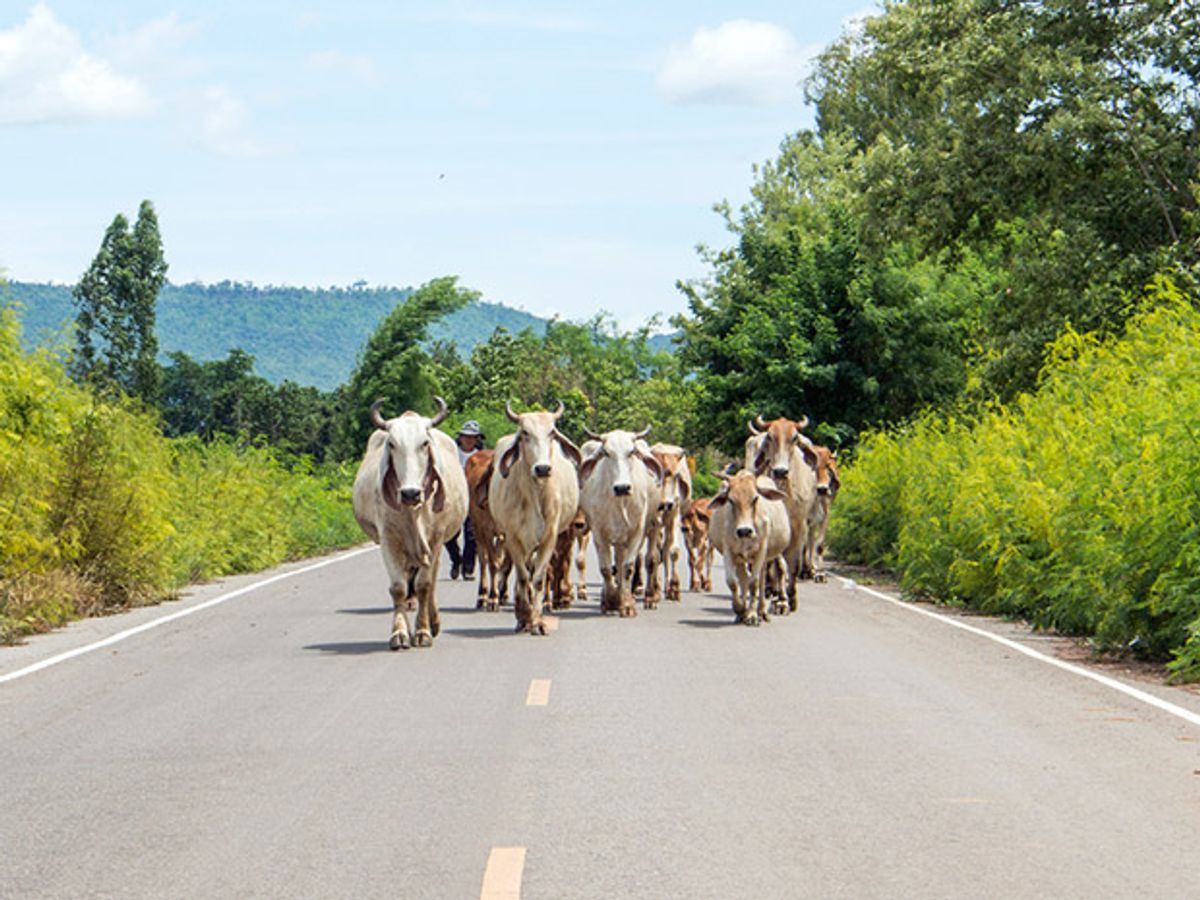Anyone working on autonomous vehicle decision-making spends a lot of time worrying about edge cases—situations that come up so infrequently that you can't predict them very well, and consequently can't prepare for them effectively.
Here in the United States, a lazy cow lying in the middle of the road probably qualifies as such an edge case, but in India, it's very common, and a real concern for drivers. It's common enough, in fact, that researchers from Gujarat Technological University in Ahmedabad are developing a system that can detect cows in the road and alert the driver to take evasive action.
The driving situation in India is fairly awful: the country is responsible for nearly 10% total traffic fatalities worldwide, and the number of people injured is of course much higher. In one region of rural India, about 6% of accidents were caused by animals in the roadway, most frequently dogs or cows. Cows are literally the bigger problem, since the consequences of hitting a cow is much more significant than hitting a dog.
At Gujarat Technological University, Sachin Sharma and Dharmesh Shah have designed a visual animal detection system that uses algorithms based on histogram of oriented gradients and cascade classifiers running in OpenCV. Cow training data came from public image datasets (like the KTH Animal Dataset), and in total 900 images of cows were input into the classifier.
In testing, the system was able to recognize single cows in videos about 80% of the time, although the researchers are still working on refining their technique to handle different orientations, different weather conditions, and challenging lighting. The goal is to run this software on a forward-facing camera in a vehicle and alert the driver when there is a cow in the road, when the cow is close to the vehicle, and when there's risk of a collision.
Large animals in roadways aren't just a problem in India— in Saudi Arabia, the have the same problem, except with camels. Camels are particularly bad animals to run into: their legs are very long and the body of the camel starts above the hood of a typical car at about windshield height.
The Saudi Ministry of Transport has spent an enormous amount of money building fences along highways to keep the camels out, but a few years ago some researchers from King Faisal University proposed a novel idea: a "deployable and intelligent Camel-Vehicle Accident Avoidance System (CVAAS) using global positioning system technology."
The Saudi researchers pointed out that animal detection systems are better than animal restriction systems because they're cheaper and much friendlier to the animals, since they remain free to wander. The CVAAS idea involves equipping every single camel with its own GPS locator beacon, and then putting a warning unit inside vehicles. If the warning unit receives an SMS that there's a nearby camel on a the road, the driver gets an alert. It looks like the CVASS was successfully tested but not deployed, and you can read the absolutely fascinating 2013 paper here.
Whether or not visual cow detection (or GPS-based camel detection) is a major technical advance is debatable, but this example highlights a problem with the scalability of autonomous vehicles in general: you can't train a fleet of AVs in one region and expect it to function just as reliably in another.
This is true in small ways going from state to state in the U.S., with horizontal vs vertical traffic signals as just one simple change that AVs need to be able to handle. Things get far more challenging from there. As AVs expand to other countries with other climates, other customs, and other venerated bovines with the freedom to wander, they'll need to display the kind of adaptability that autonomous systems are notoriously poor at in order to be successful and safe.
Evan Ackerman is a senior editor at IEEE Spectrum. Since 2007, he has written over 6,000 articles on robotics and technology. He has a degree in Martian geology and is excellent at playing bagpipes.



